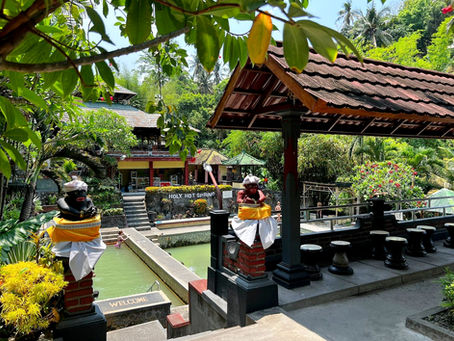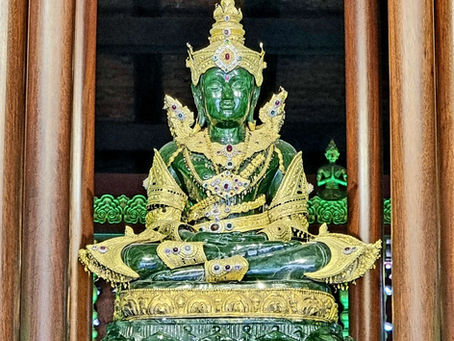top of page

GLOBAL SHANANIGANS

Search


Elephant Trunk Hill
At the confluence of the Li and Taohua Rivers, Elephant Trunk Hill stands as a silent guardian of Guilin, a natural sculpture shaped by time and legend. Said to be the petrified form of a celestial elephant struck down by the Heavenly Emperor, it blurs the boundary between myth and geology. For over a thousand years, poets and monks have carved their reverence into its stone, honouring its enduring spirit of wisdom and compassion.
Shannon


Suan Dok Temple
Marked by the presence royal ashes, Wat Suan Dok was established in the 14th century on the grounds of a royal garden. Its tranquil exterior belies over six centuries of sacred history. Whitewashed chedis catch the northern Thai sunlight, standing as symbols of devotion, mortality and remembrance. Surrounding the central chedi, royal mausoleums enshrine Chiang Mai’s rulers, underscoring the temple’s role as a spiritual bridge between the living and the departed.
Shannon


Bale Kambang
Floating within the ruins of Klungkung Palace, Bale Kambang rises like a defiant island, a silent witness to centuries of ambition, devotion and blood soaked politics. Built when Bali’s unified kingdom splintered into warring courts, it is more than a royal relic, a fusion of power, spirituality and symbolic mastery. Its ceiling murals depict kings and gods walking the line between the mortal and the divine, while the surrounding waters reflect the cosmic ocean and the fragil
Shannon


Khao Sok National Park - Thailand’s Ancient Jungle
Declared a national park in 1980, Khao Sok in southern Thailand’s Surat Thani Province is a primeval wilderness frozen in time. Towering limestone karsts and winding rivers carve through a sprawling rainforest so ancient it once lay beneath a prehistoric ocean. At 160 million years old, Khao Sok’s evergreen rainforest offers travellers a rare glimpse into a world that has survived ice ages, shifting continents and humanity’s relentless march.
Shannon


Wat Chedi Luang
Commissioned under King Saen Muangma in the late 14th century, this ancient royal monastery stands among Chiang Mai’s most venerated temples. Originally envisioned as a monumental reliquary to honour and enshrine the ashes of his father, King Ku Na, it was to rise as a symbol of royal devotion and divine aspiration. Yet destiny had other plans.
Shannon


Wat MingMuang - The Temple of Crouching Elephants
Long ago, the land where Wat MingMuang now stands was a vast, fertile swamp, alive with dense reeds and winding waterways. Hidden within this wild sanctuary, majestic elephants roamed freely, revered as sacred symbols of power, wisdom and royalty. Amid this untamed beauty, the temple’s foundations were laid, a place where human devotion met the quiet majesty of nature, shrouded in the whispers of centuries past.
Shannon


Wat Rong Khun - The Temple of Light
Radiant in white and adorned with shimmering mirrors, the White Temple embodies the journey toward spiritual purity and enlightenment. Its gleaming surfaces symbolise Buddha’s divine wisdom, while the mirrored mosaics reflect the light of truth that dispels ignorance. Conceived as a visual meditation on the path to nirvana, Wat Rong Khun invites reflection on the struggle between temptation and purity that lies at the heart of the human experience.
Shannon


The Royal Twin Pagodas
Perched atop the misty heights of Doi Inthanon National Park, the twin pagodas were built to honour the 60th birthdays of King Bhumibol Adulyadej and Queen Sirikit. Beyond their striking architecture, these sacred structures embody Thailand’s deep respect for the monarchy, the enduring strength of its Buddhist heritage and the unity of its people, standing as timeless symbols of reverence and national pride.
Shannon


Banjar Holy Hot Springs
Believed to have been used for nearly a thousand years, the Banjar Hot Springs, known locally as Permadian Air Panas, hold deep spiritual and cultural significance dating back to at least the 10th century. Oral traditions and local belief suggest these sacred springs have long served as a place for ritual purification and healing, well before the arrival of modern tourism.
Shannon


Co Loa Ancient Citadel
Dating back to 208 BC, Co Loa Citadel rose as the heart of the ancient Au Lac kingdom under the legendary King An Duong Vuong. Legend tells of a mighty crossbow and protective magic, yet even these could not save the kingdom from betrayal and ruin, a story of power, ambition and ghosts that still linger over the northern plains.
Shannon


One Pillar Pagoda
Regarded as one of Vietnam’s most iconic architectural treasures, the One Pillar Pagoda rises like a solitary lotus from the water. Built in 1049 AD by Emperor Lý Thái Tông and dedicated to Quan Âm, the Bodhisattva of Compassion, the shrine has long drawn worshippers seeking fertility, health and divine favour, its slender silhouette a silent witness to a millennium of faith and history.
Shannon


The Temple of Literature
Founded in 1070 AD under Emperor Lý Thánh Tông, the Temple of Literature honours Confucius and his disciples, its courtyards, banyan trees and lotus ponds echoing centuries of scholarly pursuit. Later home to Vietnam’s first university, it carries the weight of history and the whispered presence of generations of students, a place where wisdom feels alive, shadowed by the spirits of those who once walked its paths.
Shannon


The Royal Regalia Museum of Brunei
The opulent treasures of the Sultan’s legacy are displayed at the Royal Regalia Museum, from glittering crown jewels and ceremonial weapons to life sized gilded carriages and intricately crafted thrones, reflecting the grandeur of royal ceremonies. Heirlooms of faith and power trace the royal family’s lineage to the 14th century, while lavish gifts from world leaders, exquisite Islamic art and rare Qurans highlight the fusion of culture, spirituality and monarchy.
Shannon


Wat Phra Kaew Chiang Rai and The Sacred Storm
Tucked away in the northern Thai city of Chiang Rai, Wat Phra Kaew is a temple steeped in legend, royal heritage and spiritual significance. Once called Wat Pa Yeah or the "Bamboo Forest Temple," it was renamed after its association with the famed Emerald Buddha, now enshrined in Bangkok. Established as a royal temple during the Lanna Kingdom in the late 14th century, it stands as one of Chiang Rai’s oldest religious sites still in operation today.
Shannon


Surat Thani
Long before travellers came seeking ferries to the islands, this land was the heart of the Srivijaya Empire, a kingdom of monks and mariners who spread their beliefs across the seas. While the traces of that empire have mostly faded into dust, Surat Thani still carries its spirit, in the rhythm of daily life, in the gentle pace of its people and in the enduring sense that something sacred once called this place home.
Shannon


Kerta Gosa Pavilion
Steeped in centuries of judgement, where kings and nobles once wielded verdicts beneath the watchful gaze of the gods, Kerta Gosa stands as a chilling testament to Bali’s intertwining of law, ritual and cosmic retribution, a sacred space where punishment was vivid, divine, and absolute. Beneath the flaking frescoes that depict the torments of the underworld, the echoes of those rulings linger like a cold breath, a haunting reminder that justice here was relentless and inescap
Shannon


Alas Harum Bali
In Tegallalang valley, Alas Harum lures Instagrammers to sky-high swings and rope bridges, yet farmers continue cultivating rice as they have for generations. The hillside cascades in green steps, forming a living landscape that is both a visual spectacle and a functioning agricultural system. Even amid the crowds, the valley’s heartbeat remains in the careful balance of water, labour and tradition that sustains its cultural and natural heritage.
Shannon


The Dark Mystique of Dvarapalas
In the sacred ruins and temples scattered throughout Asia, the Dvarapalas loom in silence, their colossal forms carved by hands long turned to dust. They once guarded the thresholds of kingdoms now consumed by time, their presence a testament to forgotten empires and their devotion to the sacred. To stand before them is to confront centuries of belief etched into stone, a solemn reminder that the path into the divine has always been shadowed by danger.
Shannon


Wat Mung Muang
Historical records for this humble temple are scarce, yet local tradition claims it predates the very founding of Chiang Rai, giving it an age of over 800 years. Its origins likely trace back to the early Lanna Kingdom, possibly during the reign of King Mengrai or shortly after. Though modest in scale, Wat Mung Muang has quietly observed the unfolding tides of northern Thailand’s history, standing as a silent guardian of the region’s political and cultural transformations.
Shannon


Tanah Lot - Bali’s Famous Sea Temple
One of Bali’s most revered and iconic sea temples, perched on a rocky outcrop along the island’s west coast, is Tanah Lot. Set about 300 metres offshore, the shrine faces the unyielding tides of the Indian Ocean, its striking presence blending natural drama with deep spiritual meaning. Though calm and picturesque from afar, the temple is regarded as a threshold where divine forces are worshipped and balance is maintained against darker energies.
Shannon
bottom of page